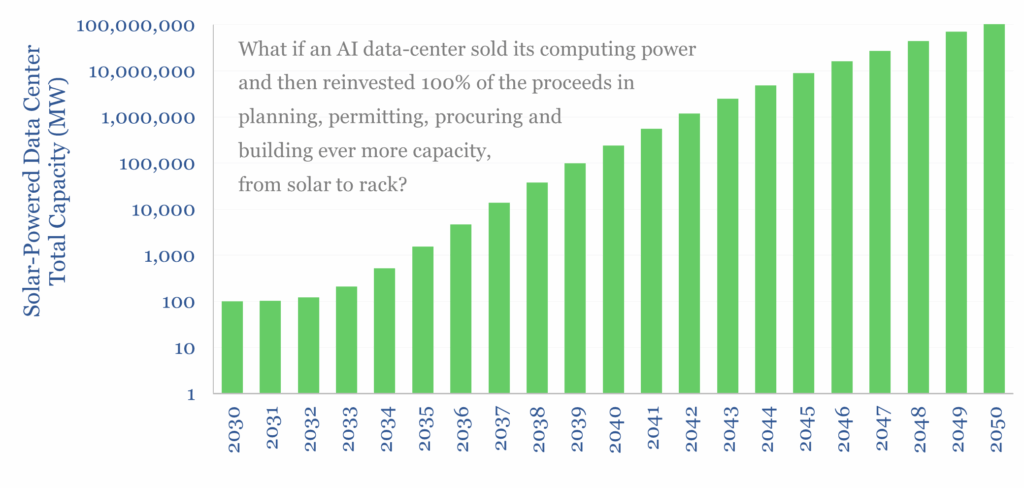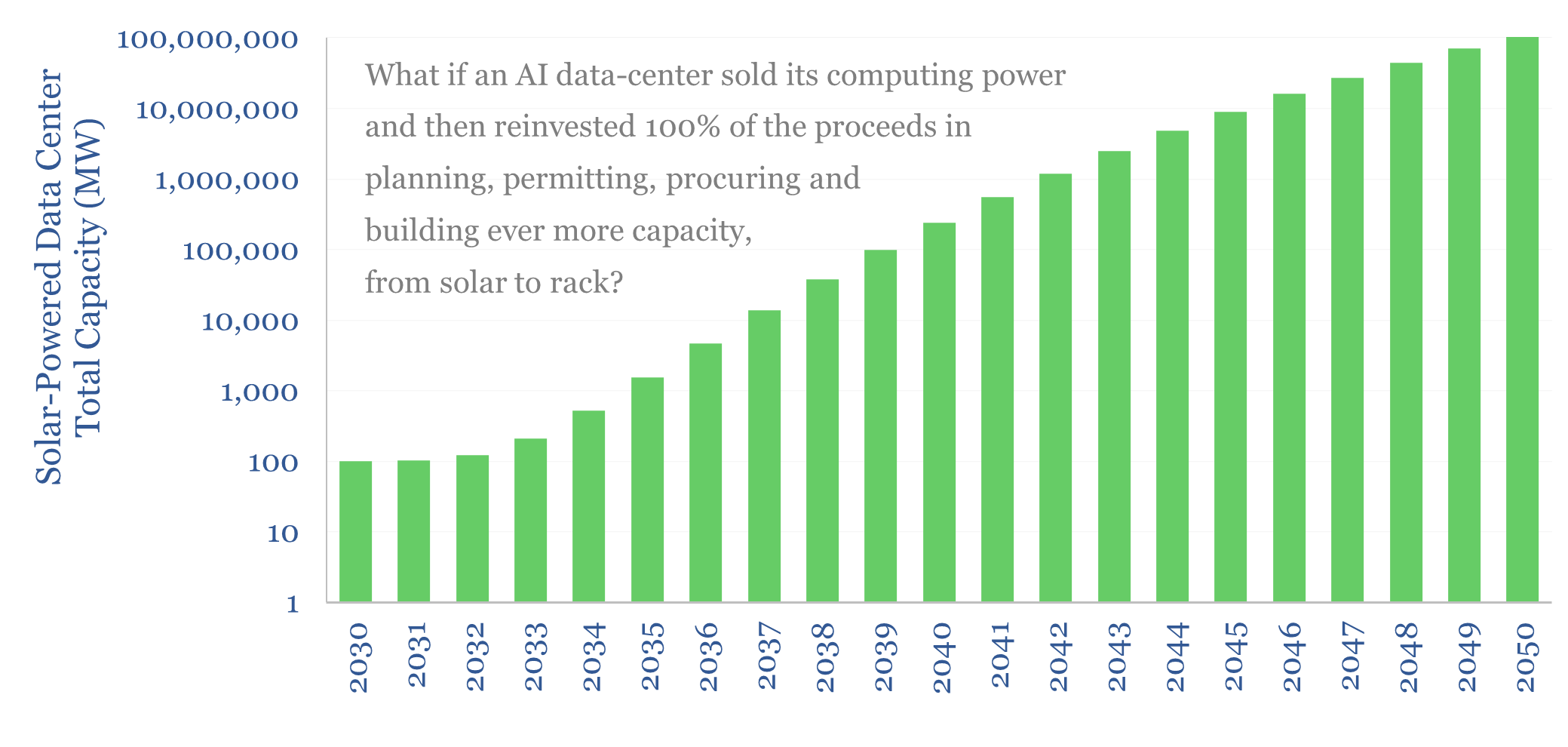What if a data center was powered entirely by solar, and then the profits and spare computation resources from the data-center were fully reinvested in building more solar and building more racks? Could you end up with 100TW-scale data-centers?! Would this solar+AI bootstrapping scenario fail to materialize because we would run out of things to compute? Or more likely, would the prices of materials and manufacturing escalate sharply?
In our published forecasts for global energy markets and global electricity demand, we have assumed around 150GW of AI data-centers will be deployed by 2030 and then continue ramping linearly, while solar capacity additions will rise from +600GW pa to surpass +1TW around 2030 and +3TW pa by 2050.
The thing about exponential growth is that it can be very hard to model. Could there be any futuristic scenarios where AI and solar both grow exponentially, and in some interlinked way?
In this data-file, we have played around with a scenario, where solar and AI mutually bootstrap ever more capacity for one-another. Specifically, the idea is that we start with a 100MW AI data-center, powered at 25% load factor, by solar and solar alone, somewhere where there is a lot of land, such as in the Arabian or Arizona desert, starting in the Year 2030. By this time computing performance has increased by maybe 100x to 5,000 GFLOPS/Watt (forecast here).
Then every year, the proceeds from running the data-center are re-invested in planning, permitting, procuring and installing more solar and more data center racks. So the capacity of the solar-powered data center grows faster over time, in a kind of positive feedback loop.
Procurement of solar modules, inverters and other materials starts at $500/kW and gradually deflates (model here). AI data center capex starts at $20,000/kW (model here).
To make the scenario really science-fictiony, we can assume that the solar planning and installation is performed entirely by autonomous drones and robots, whose computational needs are supplied by the data center, and whose energy needs are supplied by the solar.
If the pricing of compute starts at $3.5/EFLOP in 2030, the price of compute falls -20% pa, and the aggregate energy performance of compute improves 10% pa, then we end up in a situation where every year, the data center adds more capacity, thus gets larger, thus generates more revenue, and thus can afford to build even more solar and more racks in the following year. If you keep compounding at this exponential rate, you can reach 100TW of solar and 100TW of AI data-center capacity by 2050, which is scary-high. The total energy consumption of human civilization today is only about 10TW.

This solar+AI bootstrapping scenario is clearly more of a mathematical thought experiment than a reason to update models. But it is interesting to play around with this model, and speculate what a 100TW data-center might be able to do (solve any scientific, medical, creative, legal or financial problem?). Or whether global supply chains could produce 30TW pa of solar modules in 2050 (why not, if the demand is there?!).
If we wanted to de-rail this exponential ramp-up, then how could we do it? Well, one possibility is if we run out of demand for compute, so compute prices get very cheap. The price of compute would need to fall by around 40% per year for this bootstrapped data center to cap out at only 1TW (chart below).

Or alternatively, the cost of manufacturing solar and IT hardware would need to rise by 20% per year, to cap our enormous data center at 1GW. A large part of this would presumably come via re-inflation in supply chains for materials, such as silicon, silver, copper, polymers, Rare Earths. For example, the 2050 additions would require about 150MT of copper, which is 5x today’s global copper demand.
Land would, on the other hand, not necessarily be a constraint. The land intensity of solar today is around 6 acres/MW. So our 100TW solar+AI data center requires 250M acres. The Arabian desert is over 500M acres in size.
It is interesting just to play around with the numbers in the solar+AI bootstrapping data-file and think about “what if”. We are in the midst of an AI-driven energy transition. And this could even unlock Kardashev-scale energy.
